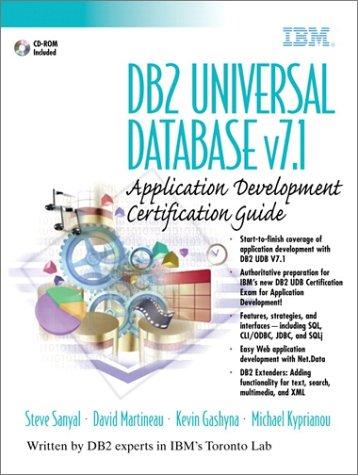Question
QUESTION 26 1. Multiple inheritance is ____ required. a. frequently b. never c. always d. rarely 2 points QUESTION 27 1. The terms template function
QUESTION 26
1. Multiple inheritance is ____ required.
| a. | frequently | |
| b. | never | |
| c. | always | |
| d. | rarely |
2 points
QUESTION 27
1. The terms template function and ____ are often used interchangeably.
| a. | template class | |
| b. | class template | |
| c. | function template | |
| d. | generic method |
2 points
QUESTION 28
1. A(n) ____ is one that can stand for any number of C++ types.
| a. | container class | |
| b. | structure | |
| c. | abstract data type | |
| d. | generic parameter |
2 points
QUESTION 29
1. Complete the following function template: ____ T reverse(T x) { return -x; }
| a. | template (class T) | |
| b. | template | |
| c. | template : class T | |
| d. | template {class T} |
2 points
QUESTION 30
1. The ____ operator is automatically defined for classes you create, but you can also overload it.
| a. | >> | |
| b. | + | |
| c. | % | |
| d. | = |
2 points
QUESTION 31
1. You ____ functions when you create functions with the same name but with different argument lists.
| a. | override | |
| b. | overload | |
| c. | abstract | |
| d. | replace |
2 points
QUESTION 32
1. To create a function template that employs multiple generic types, you simply use a(n) ____ for each type.
| a. | function prototype | |
| b. | separate template class | |
| c. | unique type identifier | |
| d. | #include statement |
2 points
QUESTION 33
1. The function call ____ specifies that someFunctions parameterized type (for example, T ) will be char, no matter what type someArgument is.
| a. | someFunction | |
| b. | someFunction:char(someArgument); | |
| c. | someFunction{char}(someArgument); | |
| d. | someFunction((char) someArgument); |
2 points
QUESTION 34
1. A ____ is a data structure in which elements are removed in the same order they were entered.
| a. | stack | |
| b. | vector | |
| c. | queue | |
| d. | list |
2 points
QUESTION 35
1. A ____ is a data structure in which elements are removed in the reverse order from which they were entered.
| a. | queue | |
| b. | list | |
| c. | stack | |
| d. | vector |
2 points
QUESTION 36
1. Which of the following is not a common task to perform with an array?
| a. | Convert the array to a stack. | |
| b. | Sort the elements in an array in ascending or descending order. | |
| c. | Reverse the order of elements in an array. | |
| d. | Display an element in a specified position in the array. |
2 points
QUESTION 37
1. A general rule of ____ programming is that a function should be able to determine an error situation, but not necessarily take action on it.
| a. | assembly | |
| b. | logic | |
| c. | non-structured | |
| d. | modular |
2 points
QUESTION 38
1. You throw an exception by using the keyword throw followed by ____ object.
| a. | a catch | |
| b. | an exception | |
| c. | a string | |
| d. | any C++ |
2 points
QUESTION 39
1. A(n) ____ resembles a return statement in a function, except that the execution of the program does not continue from where the function was called.
| a. | try | |
| b. | catch | |
| c. | throw | |
| d. | exit() |
2 points
QUESTION 40
1. A catch block ____ display, or to use in any way, what is thrown.
| a. | is not required to | |
| b. | is required to | |
| c. | must not | |
| d. | cannot |
2 points
QUESTION 41
1. When you include multiple catch blocks in a program, ____ catch block that is able to accept a thrown object is the one that will execute.
| a. | the last | |
| b. | the first | |
| c. | every | |
| d. | any |
2 points
QUESTION 42
1. You create a default exception handler by creating a(n) ____ block with an ellipsis () as its parameter.
| a. | exit | |
| b. | throw | |
| c. | try | |
| d. | catch |
2 points
Step by Step Solution
There are 3 Steps involved in it
Step: 1

Get Instant Access to Expert-Tailored Solutions
See step-by-step solutions with expert insights and AI powered tools for academic success
Step: 2

Step: 3

Ace Your Homework with AI
Get the answers you need in no time with our AI-driven, step-by-step assistance
Get Started


